A Comparative Analysis of OSH Training: Evaluating Traditional Methods Versus Interactive and Virtual Reality Approaches in the Context of Sustainability
Abstract
1. Introduction
2. Current Training Methods
2.1. OSH Training
“To ensure that employees, …, according to the needs of the work they perform, sufficient and adequate information and instructions on OSH protection according to this Act and according to special legal regulations, in particular in the form of acquaintance with the risks, the results of risk assessment and the measures for protection against the effects of these risks that are relevant to their work and workplace.”[1]
2.2. Practical Training of Integrated Rescue System (IRS) Units Through VR
2.3. Preparing for Crisis and Emergency Situations in the Workplace
3. Interactive Elements in Training
3.1. Visualization
3.2. Interaction
4. Virtual Reality and Its Involvement in Education
4.1. Education in Schools
4.2. Education in Health and Emergency Preparedness
4.3. On-the-Job Training
5. Concrete Use of VR Tools in Practice
5.1. VR Modules for the Practical Training of Employees in an Integrated Steel Company
5.2. Student VR Training with Immersive Factory VR on FSE UNIZA
6. Comparison of Traditional and Modern Training Methods
6.1. Feedback from the Practical Training of Steelworks Employees
- (a)
- Information about the participant—gender, age, job title;
- (b)
- Information about their experience with VR—how they liked the training, whether they had previous experience with VR, whether the training had any benefit for them, whether they felt uncomfortable using VR;
- (c)
- Compare what is a better form of training for the participants in terms of information transfer, practicing a practical skill (e.g., bindery training), practicing theoretical knowledge (e.g., boiler room operator training or integrated management system training), and solving a problem.
- (a)
- Training modules with VR were more appreciated by women than men and by workers more than students and administrative staff. Participants in the 30–45 age group were the most interested.
- (b)
- More students than other professions, more men than women, and, as expected, participants with an age below 30 had previous experience with VR.
- (c)
- Less than one-quarter of the audience (22.66%) felt sick when using VR tools. Some trainees were so worried about VR that they did not attend the training at all. However, these were not included in the survey.
6.2. Feedback from the Practical Training of FSE UNIZA Students
7. Discussion
8. Conclusions
Author Contributions
Funding
Institutional Review Board Statement
Informed Consent Statement
Data Availability Statement
Acknowledgments
Conflicts of Interest
Abbreviations
| AR | Augmented Reality |
| CBRN-e | Chemical, Biological, Radiological, Nuclear and explosive threats |
| HSE | Health, Safety and Environment |
| IF | Immersive Factory |
| IRS | Integrated rescue system |
| LOTO | Lock Out, Tag Out |
| OSH | Occupational Safety and Health |
| VR | Virtual Reality |
| XR | Extended Reality |
References
- Act, No. 262/2006 Coll. Labour Code. In Zákony Pro Lidi. 2006. Available online: https://www.zakonyprolidi.cz/cs/2006-262 (accessed on 25 June 2024).
- Malach, J.; Rozsypalová, M. (Eds.) Diagnosis of Personal and Social Development; Ostravská univerzita v Ostravě, Faculty of Education: Ostrava, Czech Republic, 2014; Available online: https://konference.osu.cz/pdae/dok/KM5.pdf (accessed on 25 June 2024)ISBN 978-80-7464-652-2.
- Firefighter VR Mobile. Virtual Reality-Based Training for Firefighters. Available online: https://firefightervrmobile.de/ (accessed on 25 June 2024).
- Anderson, L.; Virtual Reality Emerging as a Training Tool in the Fire Service. In The Big Red Guide. Available online: https://www.thebigredguide.com/insights/virtual-reality-emerging-as-a-training-tool-in-the-fire-service.html (accessed on 25 June 2024).
- DARLEY. FLAIM Trainer—Virtual Reality Firefighter Training Simulator. In Darley. Available online: https://www.darley.com/partner/flaim-systems/ (accessed on 5 September 2024).
- FLAIM SYSTEMS. FLAIM Trainer—Virtual Reality Firefighter Training Simulator. In FLAIM Systems. Available online: https://flaimsystems.com/products/trainer (accessed on 5 September 2024).
- Novák, J. Analysis of Experiences from the Pilot Implementation of Professional Development Courses for University Teachers. Pedagog. Orientat. 2022, 32, 178–203. [Google Scholar] [CrossRef]
- Porter, B.; Bozkaya, B. Assessing the Effectiveness of Using Live Interactions and Feedback to Increase Engagement in Online Learning. arXiv 2020, arXiv:2008.08241. [Google Scholar] [CrossRef]
- Poll Everywhere. Audience Response System for Live Interaction. Available online: https://www.polleverywhere.com/ (accessed on 11 November 2024).
- Orange Academy. Methods of Employee Training. Available online: https://orangeacademy.cz/clanky/metody-vzdelavani-zamestnancu/ (accessed on 11 November 2024).
- Johnson-Glenberg, M.C. Immersive VR and Education: Embodied Design Principles That Include Gesture and Hand Controls. Front. Robot. AI 2018, 5, 81. [Google Scholar] [CrossRef] [PubMed]
- Novinky.cz. A Quarter of Children from Poorer Families Were Not Helped by Anyone During Distance Learning, Survey Finds. Available online: https://www.novinky.cz/clanek/veda-skoly-ctvrtinu-deti-z-chudsich-rodin-pri-distancni-vyuce-doma-nikdo-neucil-zjistil-pruzkum-40499097 (accessed on 1 December 2024).
- Ministry of Education. Youth and Sports of the Czech Republic. Digital Education 2024. 2023. Available online: https://digitalnicesko.gov.cz/media/files/Digit%C3%A1ln%C3%AD_vzd%C4%9Bl%C3%A1v%C3%A1n%C3%AD_2024.pdf (accessed on 5 December 2024).
- UBISOFT. Assassin’s Creed Discovery Tour. Available online: https://www.ubisoft.com/en-us/game/assassins-creed/discovery-tour (accessed on 5 December 2024).
- BBC. 1943 Berlin Blitz—360° Experience. In BBC History. Available online: https://www.bbc.com/historyofthebbc/100-voices/ww2/360berlin (accessed on 5 December 2024).
- CIE GROUP. Technology Overview. In CIE Group. Available online: https://www.cie-group.cz/technology/ (accessed on 5 December 2024).
- RIBUNE.CZ. Virtual Reality in Rehabilitation: Czech Success on the Global Stage. In Tribune.cz. Available online: https://www.tribune.cz/zdravotnictvi/virtualni-realita-v-rehabilitaci-cesky-uspech-na-svetove-scene/ (accessed on 5 December 2024).
- ETC SIMULATION. ADMS Users—Disaster Management. In ETC Simulation. Available online: https://www.etcsimulation.com/adms-users-disaster-management.html (accessed on 12 December 2024).
- Park, S.; Bokijonov, S.; Choi, Y. Review of Microsoft HoloLens Applications over the Past Five Years. Appl. Sci. 2021, 11, 7259. [Google Scholar] [CrossRef]
- Bousquette, I.; Companies Finally Find a Use for Virtual Reality at Work. In The Wall Street Journal. Available online: https://www.wsj.com/articles/companies-finally-find-a-use-for-virtual-reality-at-work-9dddf8db (accessed on 12 December 2024).
- Kočkár, S. Teasers for training firefighters within immersive environments (FightARs). In Proceedings of the 26th International Scientific Conference on Crisis Management in a Specific Environment, Žilina, Slovakia, 17–18 May 2023; University of Žilina, Faculty of Security Engineering: Žilina, Slovakia, 2023. [Google Scholar]
- Kočkár, S.; Hollá, K.; Ďaďová, A.; Gaňa, J. The use of mixed reality scenarios for training crisis managers and emergency responders in an ADR tanker accident. Transp. Res. Procedia 2023, 74, 1452–1457. [Google Scholar] [CrossRef]
- STŘEDNÍ PRŮMYSLOVÁ ŠKOLA CHEMICKÁ PARDUBICE. SAFAR—Situational Awareness Training of Firefighters Within an Immersive XR Training Site. Erasmus+ Project Implementation Plan. 2023. Available online: https://saf-ar.com/ (accessed on 15 December 2024).
- IMMERSIVE FACTORY. Interactive Occupational Health and Safety Training Platform. In Immersive Factory. Available online: https://immersivefactory.com/ (accessed on 15 December 2024).
- Hollá, K.; Ďaďová, A.; Hudáková, M.; Valla, J.; Cidlinová, A.; Osvaldová, L. Causes and circumstances of accidents at work in the European Union, Slovakia and Czech Republic. Front. Public Health 2023, 20, 1118330. [Google Scholar] [CrossRef] [PubMed]
- Xie, B.; Liu, H.; Alghofiaili, R.; Lobão, F.D.; Li, C.; Li, W.; Zhang, Y.; Jiang, Y.; Huang, H.; Akdere, M. A Review on Virtual Reality Skill Training Applications. Front. Virtual Real. 2021, 2, 645153. [Google Scholar] [CrossRef]
- Do, T.D.; Protko, C.I.; Mcmahan, R.P. Stepping into the Right Shoes: The Effects of User-Matched Avatar Ethnicity and Gender on Sense of Embodiment in Virtual Reality. arXiv 2024, arXiv:2402.03279. [Google Scholar] [CrossRef] [PubMed]
- Bárdy, M.; Cidlinová, A.; Mitašová, V.; Dědičová, T. Virtual Reality in the Training of Emergency Services. In Proceedings of the 25th International Scientific Conference on Crisis Management in a Specific Environment, Žilina, Slovakia, 18–19 May 2022; University of Žilina, Faculty of Security Engineering: Žilina, Slovakia, 2022. Available online: https://vubp.cz/soubory/vyzkum/projekty/11-S4-2021-VUBP/O-Virtualni-realita-ve-vzdelavani-IZS.pdf (accessed on 15 January 2025).
- Kubas, J.; Polorecká, M.; Hollá, K.; Soltes, V.; Kelisek, A.; Strachota, S.; Malý, S. Use of Toxic Substance Release Modelling as a Tool for Prevention Planning in Border Areas. Atmosphere 2022, 13, 836. [Google Scholar] [CrossRef]
- Dai, F.; Olorunfemi, A.; Peng, W.; Cao, D.; Luo, X. Can mixed reality enhance safety communication on construction sites? An industry perspective. Saf. Sci. 2021, 133, 105009. [Google Scholar] [CrossRef]
- Leder, J.; Horlitz, T.; Puschmann, P.; Wittstock, V.; Schütz, A. Comparing immersive virtual reality and PowerPoint as methods for delivering safety training: Impacts on risk perception, learning, and decision making. Saf. Sci. 2019, 111, 271–286. [Google Scholar] [CrossRef]
- Marková, I.; Kubás, J.; Buganová, K.; Ristvej, J. Usage of Sorbents for Diminishing the Negative Impact of Substances Leaking into the Environment in Car Accidents. Front. Public Health 2022, 10, 957090. [Google Scholar] [CrossRef] [PubMed]
- Polorecká, M.; Kubás, J.; Danihelka, P.; Petrlová, K.; Repková Stofková, K.; Buganová, K. Use of Software on Modeling Hazardous Substance Release as a Support Tool for Crisis Management. Sustainability 2021, 13, 438. [Google Scholar] [CrossRef]
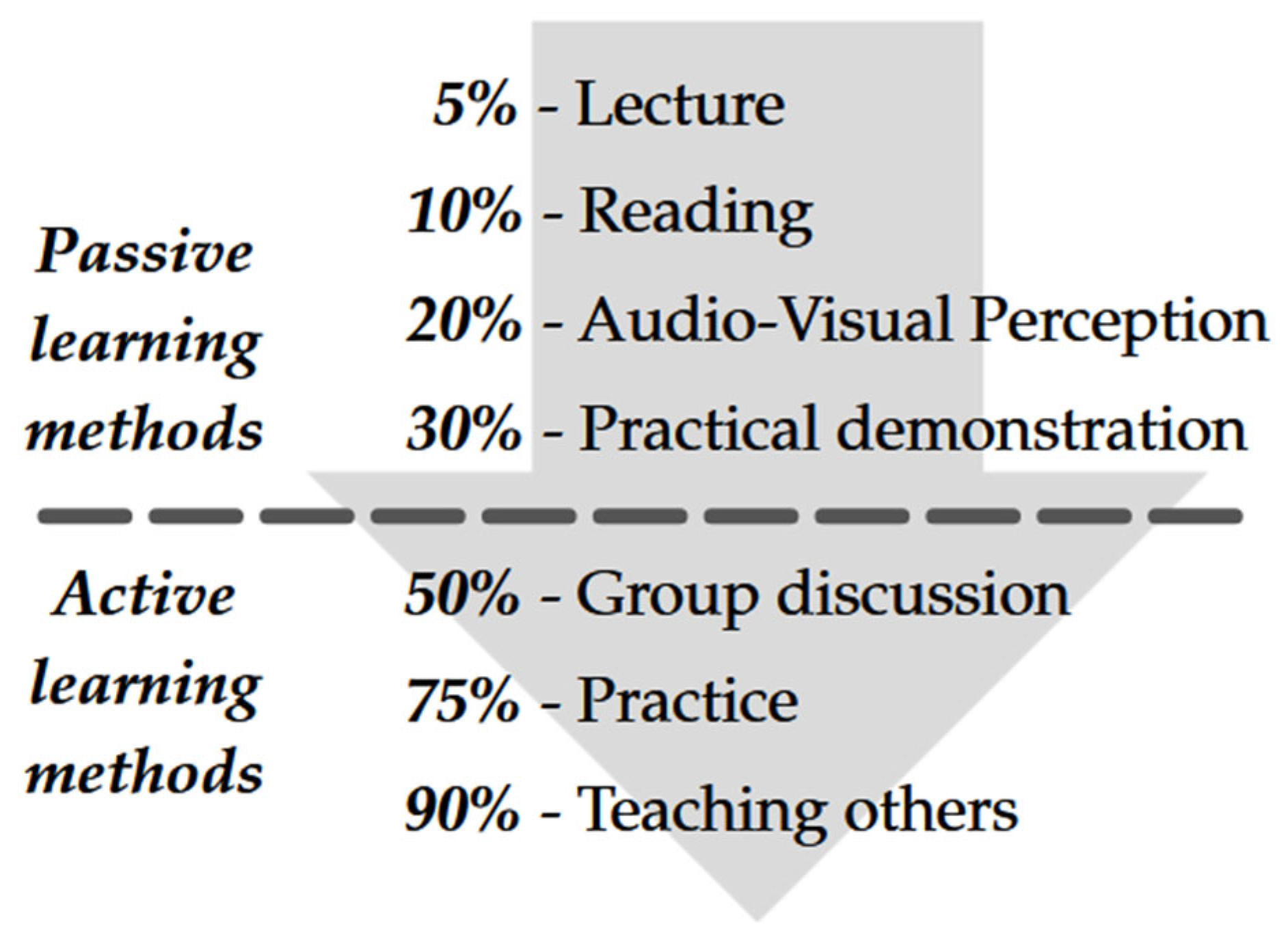
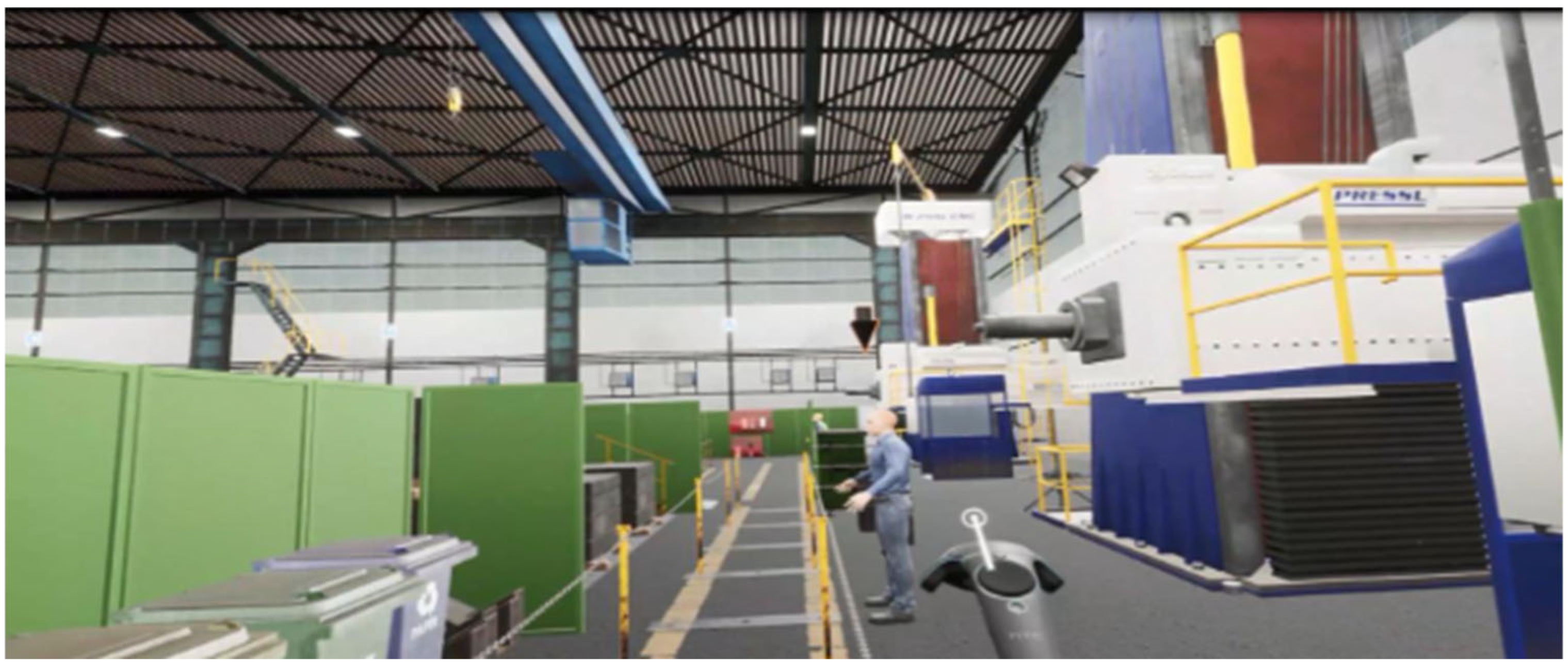
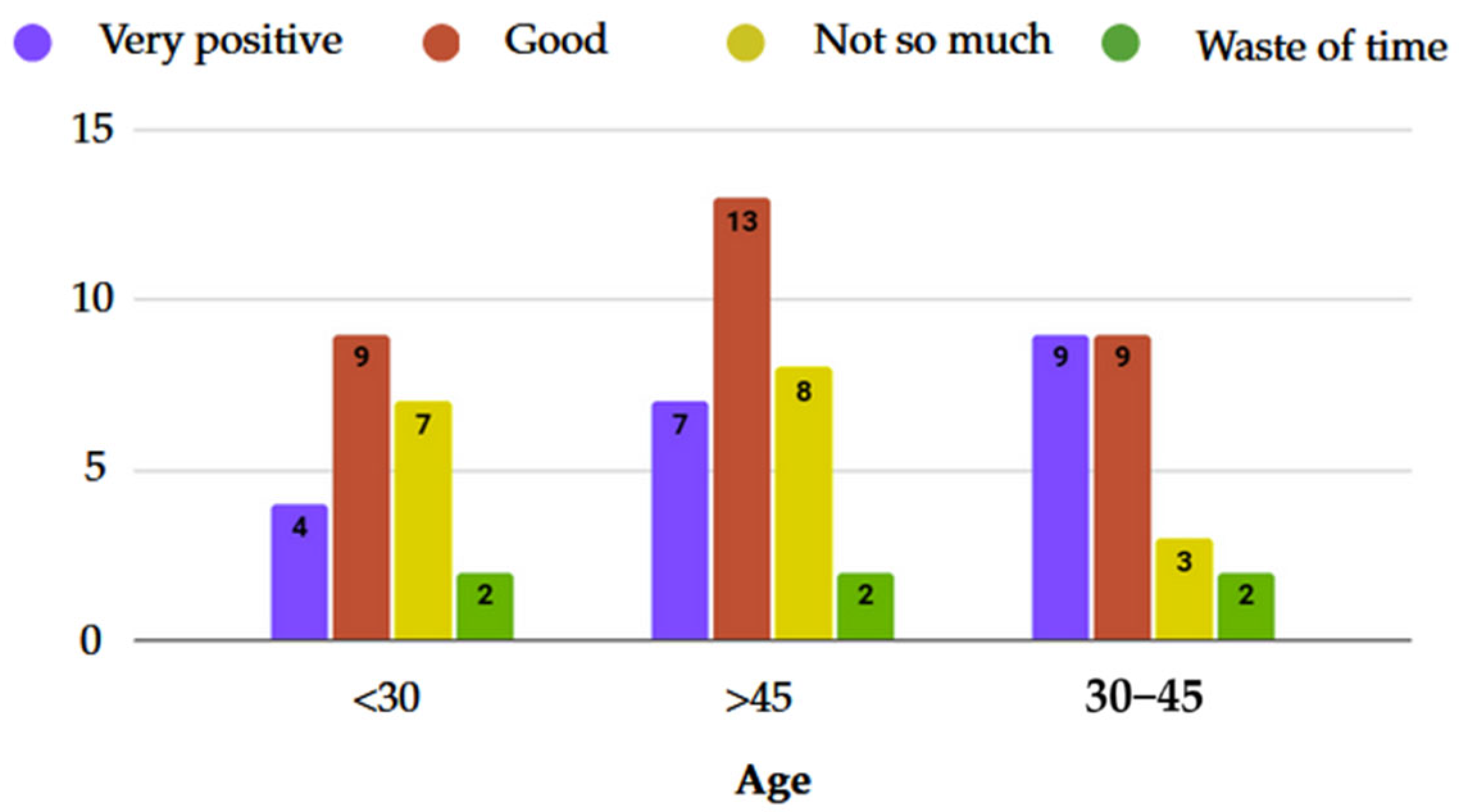
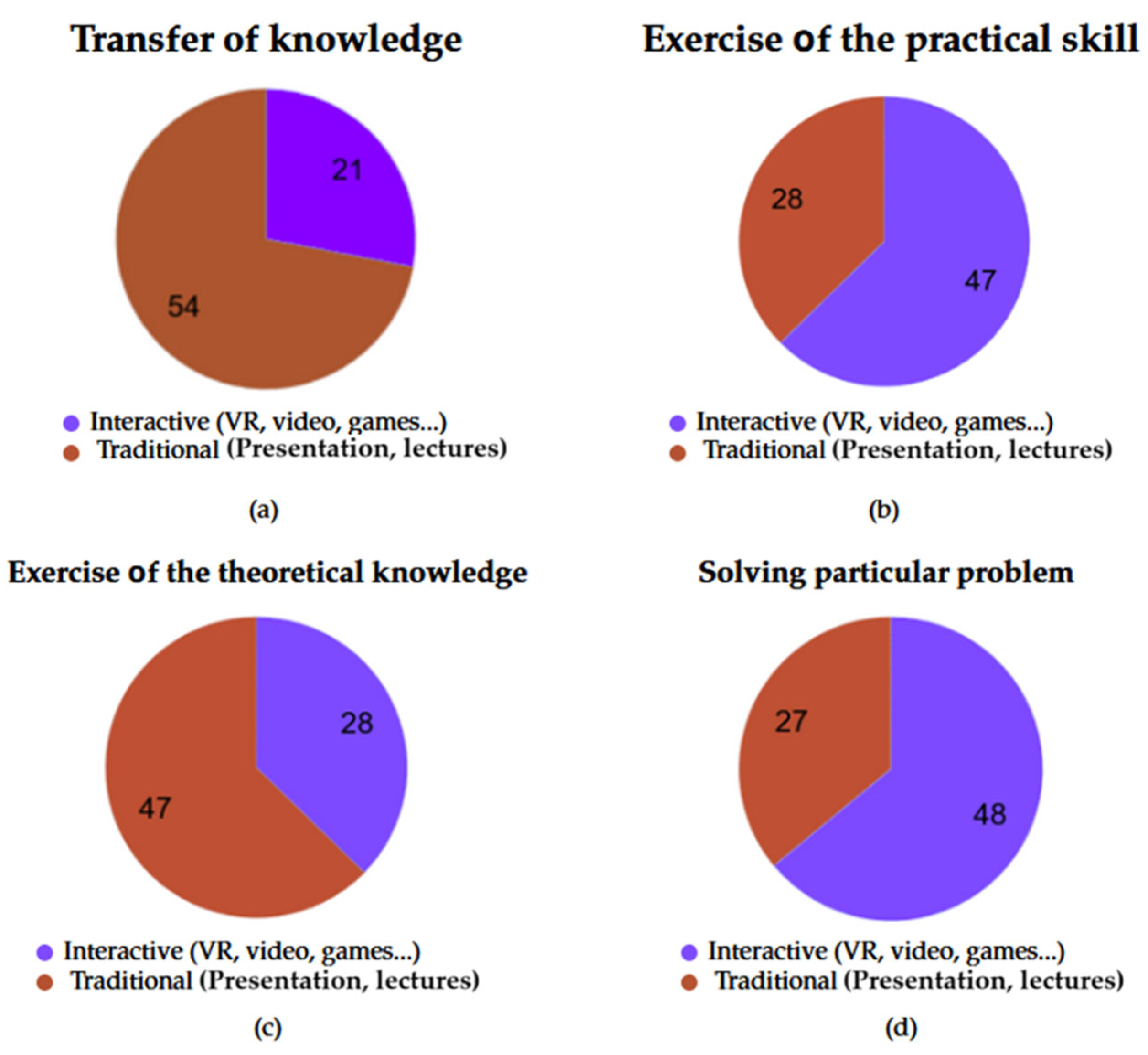

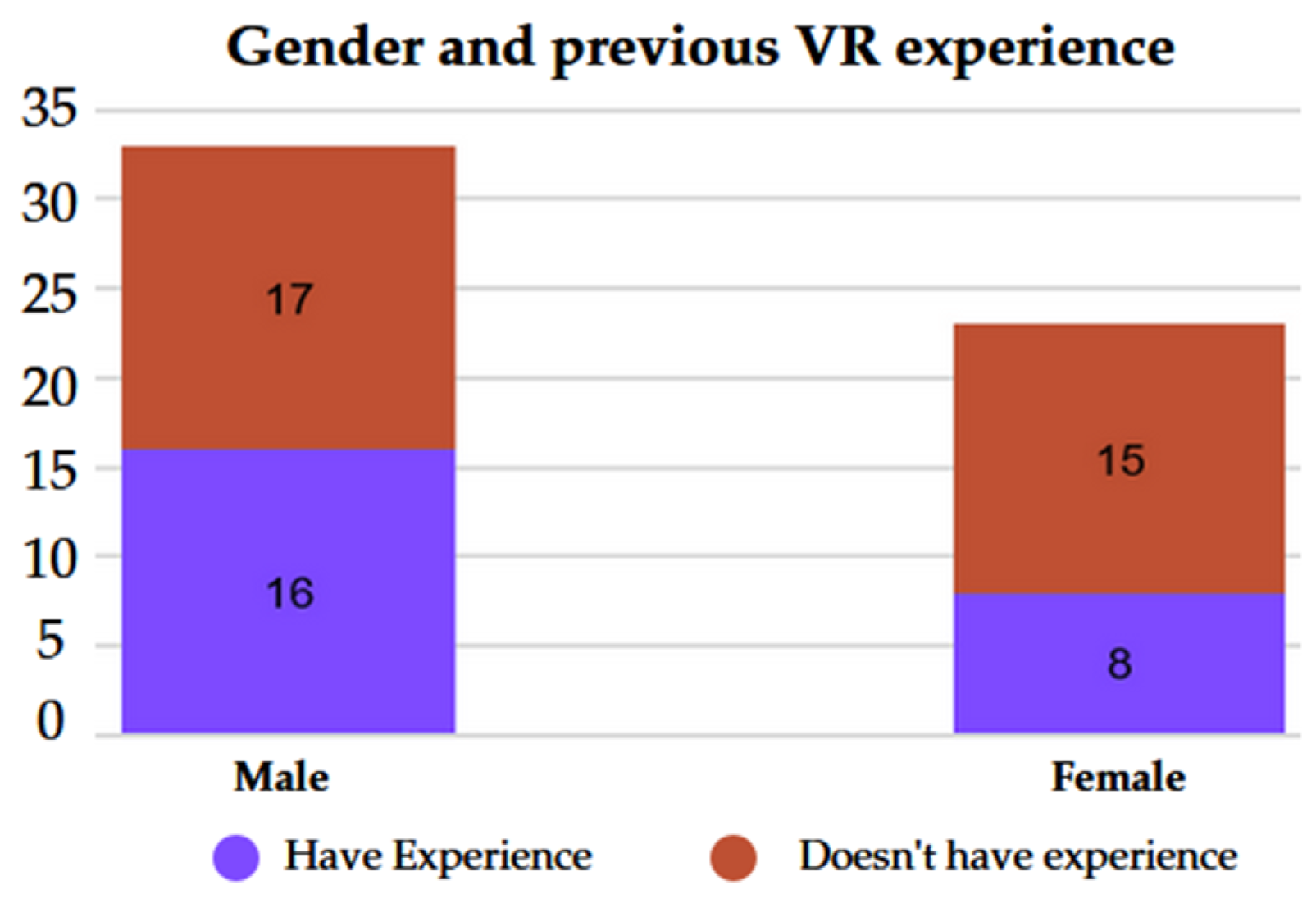
| No. | Percentage | |
|---|---|---|
| Total | 75 | 100.00% |
| Gender | ||
| Male | 48 | 64.00% |
| Female | 27 | 36.00% |
| Age | ||
| <30 | 22 | 29.33% |
| 30–45 | 23 | 30.67% |
| >45 | 30 | 40.00% |
| Profession | ||
| Shopfloor worker | 37 | 49.33% |
| Office worker | 20 | 26.67% |
| Student/Internship | 18 | 24.00% |
Disclaimer/Publisher’s Note: The statements, opinions and data contained in all publications are solely those of the individual author(s) and contributor(s) and not of MDPI and/or the editor(s). MDPI and/or the editor(s) disclaim responsibility for any injury to people or property resulting from any ideas, methods, instructions or products referred to in the content. |
© 2025 by the authors. Licensee MDPI, Basel, Switzerland. This article is an open access article distributed under the terms and conditions of the Creative Commons Attribution (CC BY) license (https://creativecommons.org/licenses/by/4.0/).
Share and Cite
Pětvaldský, T.; Kočkár, S.; Lepík, P.; Hollá, K.; Kuricová, A. A Comparative Analysis of OSH Training: Evaluating Traditional Methods Versus Interactive and Virtual Reality Approaches in the Context of Sustainability. Sustainability 2025, 17, 5570. https://doi.org/10.3390/su17125570
Pětvaldský T, Kočkár S, Lepík P, Hollá K, Kuricová A. A Comparative Analysis of OSH Training: Evaluating Traditional Methods Versus Interactive and Virtual Reality Approaches in the Context of Sustainability. Sustainability. 2025; 17(12):5570. https://doi.org/10.3390/su17125570
Chicago/Turabian StylePětvaldský, Tomáš, Samuel Kočkár, Petr Lepík, Katarína Hollá, and Alena Kuricová. 2025. "A Comparative Analysis of OSH Training: Evaluating Traditional Methods Versus Interactive and Virtual Reality Approaches in the Context of Sustainability" Sustainability 17, no. 12: 5570. https://doi.org/10.3390/su17125570
APA StylePětvaldský, T., Kočkár, S., Lepík, P., Hollá, K., & Kuricová, A. (2025). A Comparative Analysis of OSH Training: Evaluating Traditional Methods Versus Interactive and Virtual Reality Approaches in the Context of Sustainability. Sustainability, 17(12), 5570. https://doi.org/10.3390/su17125570







